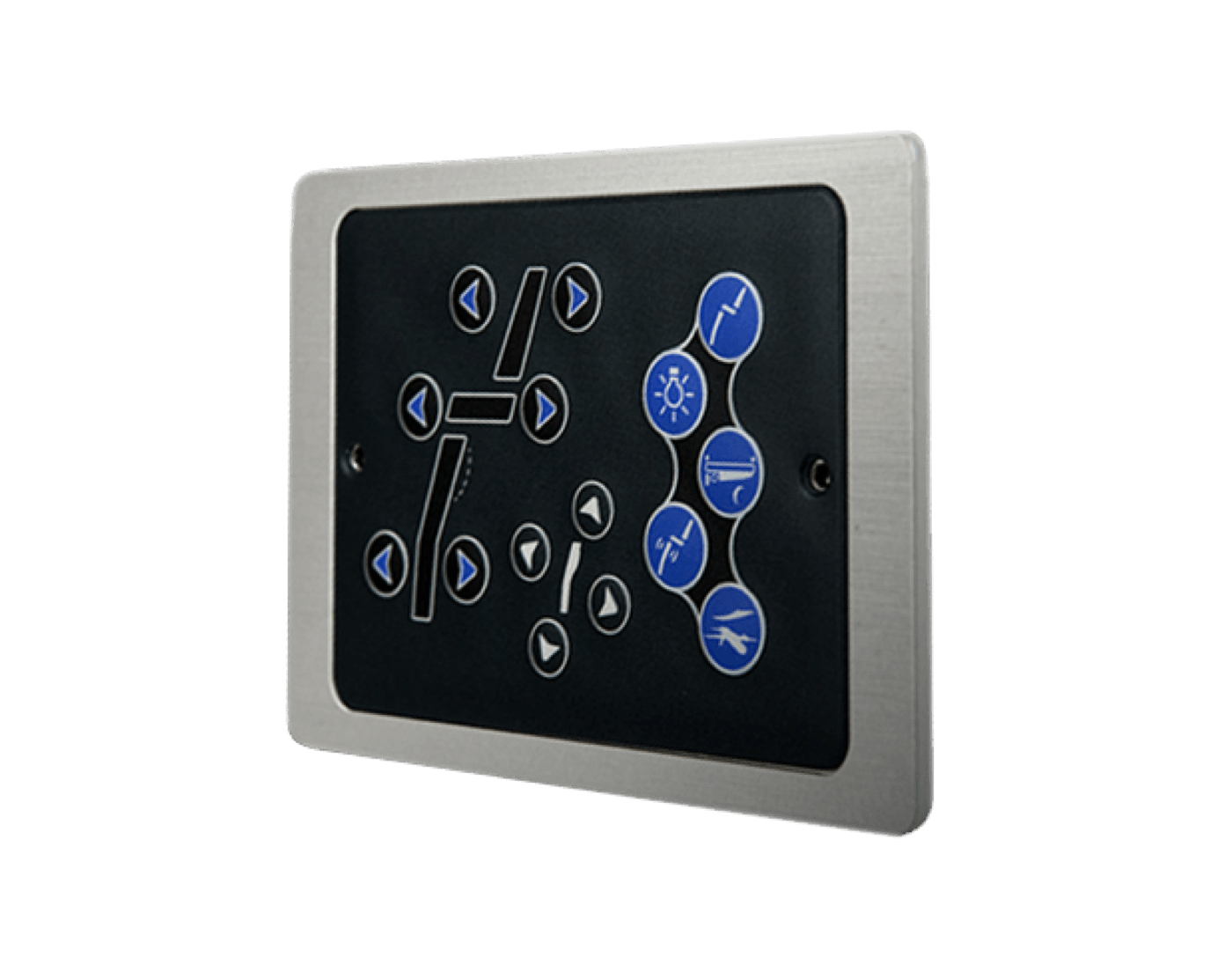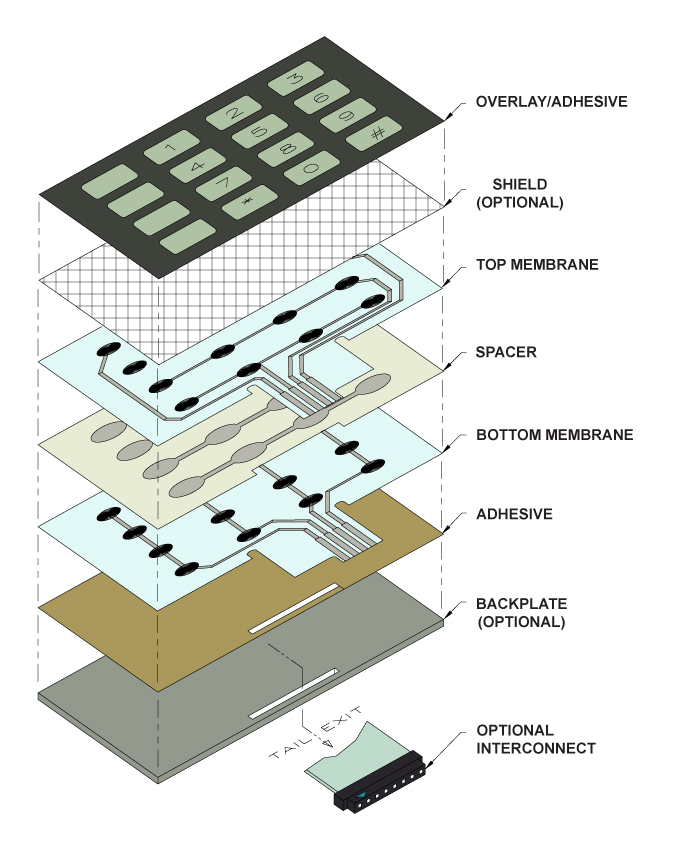The Role of Membrane Switches in Improving Product Durability and Reliability
The Role of Membrane Switches in Improving Product Durability and Reliability
Blog Article
Membrane Switch Over Innovation: The Trick to Trustworthy and Economical User Interfaces
Membrane button technology has actually become a crucial component in the design of interface, providing both reliability and cost-effectiveness throughout a varied series of applications. Its robust building makes sure resistance to ecological obstacles, while the flexibility in design permits for customized services that satisfy details industry requirements. As we discover the diverse benefits of membrane layer buttons, their capacity for technology increases concerns concerning future applications and progressing patterns. What does the following chapter hold for this technology in a significantly electronic landscape?
Recognizing Membrane Change Modern Technology
Membrane layer button innovation is a commonly made use of interface option in numerous electronic devices, supplying a seamless blend of functionality and layout. This innovation includes several layers of products, normally being composed of a visuals overlay, spacer layer, and a circuit layer. The graphic overlay shows the user interface elements, while the spacer layer separates the circuit layer from the overlay till an individual turns on a button.
When pressure is applied to the overlay, the circuit layer completes the electric circuit, sending a signal to the tool. This system enables for numerous arrangements, consisting of tactile comments and backlighting options, boosting user interaction. Membrane switches are typically made utilizing sturdy products such as polyester or polycarbonate, ensuring long life and resistance to environmental elements like wetness and dirt.
The flexibility of membrane layer switches allows their application in varied sectors, including clinical tools, consumer electronic devices, and commercial controls. Their compact layout permits for integration into space-constrained environments, giving an efficient user interface without endangering visual charm. Understanding the ins and outs of membrane layer switch innovation is necessary for makers and developers looking for to create reliable and effective human-machine user interfaces.
Trick Benefits of Membrane Layer Switches
While different interface options exist, membrane changes deal distinctive advantages that make them a preferred selection in numerous applications. One of the main advantages is their toughness; membrane layer buttons are developed to hold up against severe ecological conditions, including dampness, dust, and temperature level fluctuations, ensuring resilient efficiency. This durability significantly minimizes the need for regular substitutes, therefore reducing overall upkeep costs.

Additionally, membrane buttons are lightweight and portable, making them appropriate for applications where space is limited. Their inconspicuous design contributes to a smooth appearance without endangering capability.
Cost-effectiveness is additionally a remarkable advantage, as the manufacturing procedure for membrane layer switches over tends to be cheaper compared to traditional mechanical switches. This affordability, combined with their integrity and simplicity of setup, placements membrane changes as a useful option for a wide variety of sectors looking for effective and reliable interface.
Applications Across Numerous Industries
Exactly how do membrane buttons adapt to the diverse needs of numerous markets? Membrane switch modern technology is progressively identified for its convenience, making it appropriate for a broad range of applications across numerous markets.
In customer electronics, membrane layer buttons give a portable solution for remotes and home appliances, improving individual experience with intuitive layout. Additionally, the commercial field leverages membrane layer buttons for machinery control panels, gaining from their resistance to harsh environments, such as dampness and dirt.
Military and aerospace applications additionally use membrane layer switches for their reliability and capability to withstand extreme problems, guaranteeing functional effectiveness in vital situations. The food and beverage industry embraces these switches for automated systems, where sanitation and ease of operation are vital (membrane switch). Inevitably, membrane switches are tailored to satisfy the distinct demands of each market, proving their necessary function in contemporary technology interfaces
Layout and Modification Choices

In the world of membrane layer Read More Here button innovation, design and modification choices play a critical role in boosting performance and customer communication. These switches can be tailored to fulfill specific functional demands and visual choices, making them flexible components in numerous applications.
One of the key personalization options is the format of the switch itself, which can be designed to suit distinct interface and ergonomic factors to consider. By adjusting the form, size, and setup of buttons, suppliers can develop intuitive layouts that help with convenience of use. In addition, the consolidation of various shades and visuals overlays enables for branding and boosted exposure, making certain that individuals can quickly determine features.
Furthermore, membrane layer switches can be crafted with different tactile comments mechanisms, such as elevated buttons or distinct clicks, to enhance the customer experience. Various materials can also be selected for sturdiness and ecological resistance, addressing elements such as dampness, temperature fluctuations, and chemical direct exposure.
Ultimately, the comprehensive layout and customization choices readily available in membrane button modern technology empower services to create customized services that not just meet practical needs however also align with their branding and operational needs.

Future Patterns in Membrane Layer Switches
As membrane layer button modern technology remains to evolve, future trends try this are increasingly concentrated on enhancing customer experience and integrating sophisticated performances. One substantial pattern is the assimilation check out here of touch-sensitive and capacitive modern technologies into conventional membrane switches. This development enables more user-friendly individual interfaces, giving responsive responses while keeping a smooth style.
One more arising fad is using eco-friendly materials, driven by the growing demand for sustainable production methods. Suppliers are looking for to lower their carbon impact by making use of recyclable substratums and low-impact inks, lining up with worldwide sustainability goals.
Moreover, the rise of the Internet of Things (IoT) is prompting the incorporation of smart attributes right into membrane switches. Enhanced connection alternatives will certainly make it possible for gadgets to interact with each other, allowing for smooth combination right into wider systems.
Additionally, developments in printing technologies, such as digital printing, are permitting for better layout adaptability and personalization. This allows manufacturers to produce detailed styles and vivid shades cost-effectively.

Verdict
In verdict, membrane layer switch modern technology represents an essential development in interface layout, providing considerable advantages in longevity, modification, and cost-effectiveness. Its widespread applicability across varied markets underscores its value in modern-day technology. As innovations remain to emerge, particularly in touch-sensitive user interfaces and lasting materials, the possibility for membrane changes to enhance user experience and performance stays promising. Continued expedition of this technology will likely produce further improvements and broaden its scope in future applications.
Report this page